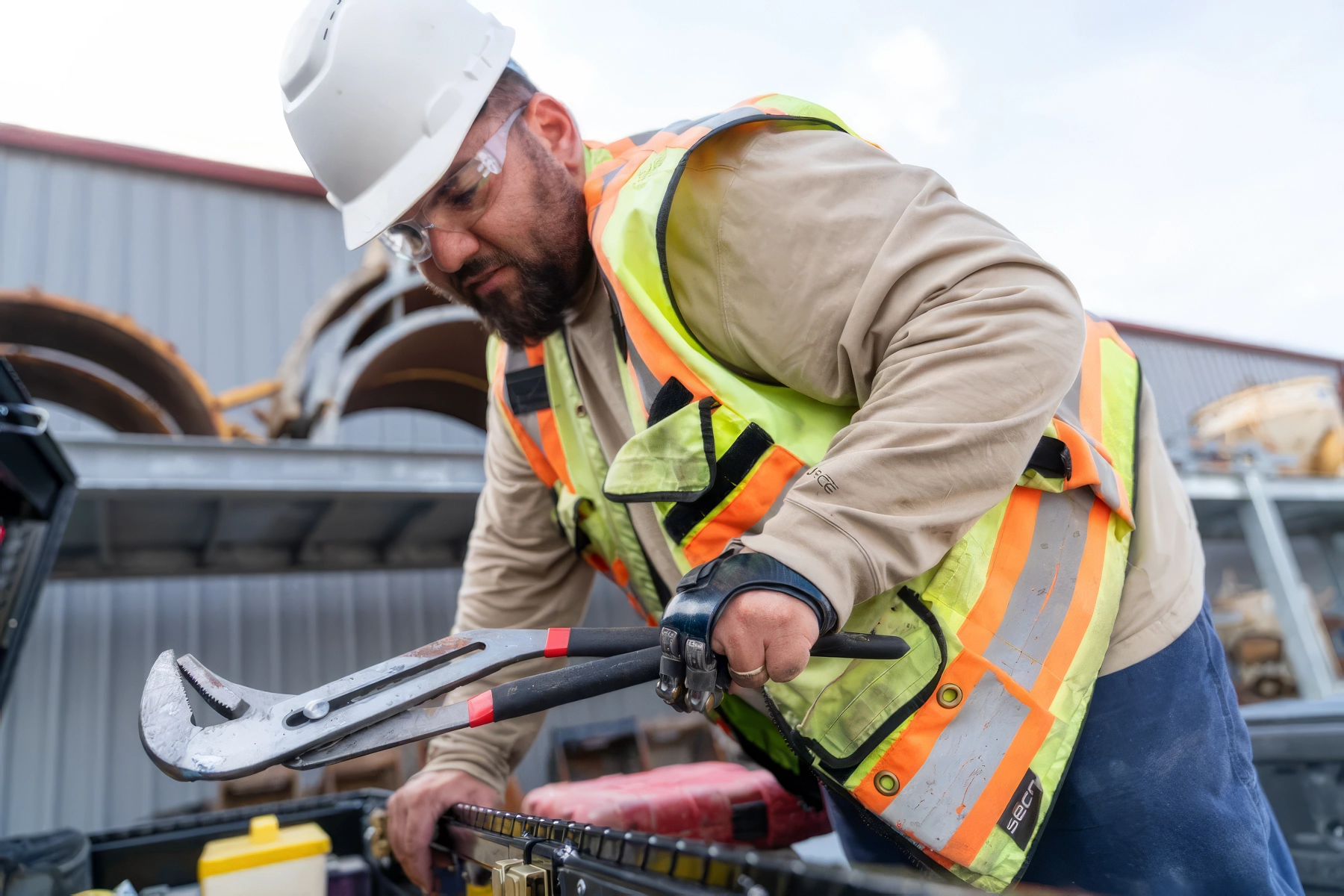We have helped many of our patients achieve their goal of returning to work after an amputation. Austin Anderson sustained his injury outside of work, while Mark Betters was injured on the job. However, both patients successfully returned to their previous positions with a prosthesis. Other times our patients return to work but may choose to transition to a different role.
Hugo Linares had been working in a shipping and receiving warehouse for 11 years when he was in an accident where his right hand was amputated. After his recovery, he returned to the same company working in a modified role. Instead of driving huge, 25-ton forklifts as he did before his injury, he now operates smaller models which are easier to control using his ETD. But what does Hugo like doing the most at his job? Using the computer. “To me, technology is the best.” Hugo’s ETD helps him operate forklifts, complete his office work, and he also has a TASKA hand to switch to when necessary. You can watch Hugo at work in his video:
The ETD/TASKA hand combo is popular with our patients! Claudia Castellanos was also injured in a workplace accident after working at an onion-packing company for 19 years. One day while up on a ladder she lost her balance. Her jacket sleeve was caught in a conveyer belt chain, and she lost her left arm above the elbow. Claudia’s ETD and TASKA, along with her activity-specific devices, have allowed her to regain her independence. At work, she’s had to make some adjustments.
“Before my accident, if something needed to be done, I’d go do it. It was easier for me to just get in the car and go do it instead of asking someone else ‘Hey, can you go look at this?’ I’d just take care of it. I wasn’t used to being stuck at a desk – it just wasn’t something that was part of my life.”
Claudia struggled initially with reshaping her thinking but eventually realized the value of teaching others what she’d learned during her years at the company. “So now I run the quality control department. I’ll take new quality control people and teach them how to check onions, how to tell if it’s a bad one, or a good one, what tolerances we’re looking at, what customers like.” You can see Claudia get back to the gym and back to work in her video:
Going back to work after an amputation can be quite the adjustment, but it can also be a beneficial step for one’s mental health. As Hugo says: “At first, I didn’t want to come back to work. I was feeling frustrated about what happened to me — I lost my hand. But the job provides me with a lot, not just money — I feel proud about myself, what I do and what I’m capable of.”
Claudia found getting back into a routine helpful. “Going back to work gave me a sense of normalcy. It gave me something to get dressed for in the morning.” Going to work each day in a different capacity and being productive helped Claudia with her outlook. “I had to reshape my thinking into saying ‘You’re not a lesser person because you have one arm. You are useful in other ways.’ I think that was one of the biggest things I had to learn.”
Returning to work after an amputation requires a patient to be physically and mentally fit, and our upper limb specialists are trained to help them overcome barriers. Our clinical therapy specialists teach patients how to best integrate their device into everyday life. Sometimes this requires our therapists to accompany a patient to their workplace to analyze the specific demands of their assigned tasks. The therapist can then advise patients on techniques or workspace modifications to improve efficiency and avoid overuse issues. We also ensure that our patients are mentally ready to return to work. We ask all our patients to complete The Wellness Inventory, a psychological screen that looks at coping style, perceived quality of life, pain level and the possibility of depression, PTSD, alcohol abuse, or drug abuse. Together, these tools and procedures make our care model truly holistic.
If you or someone you know is looking for information about prosthetic care or returning to work with a prosthesis, please contact us. As the most experienced upper limb prosthetic care provider in the world, we see hundreds of patients each year and help many of them return to performing meaningful work. If you have experience returning to your job in any capacity, we would love to hear from you. Please comment below.





%20President%20and%20Senior%20Clinical%20Director.jpg?width=600&height=600&name=John%20M.%20Miguelez%2c%20CP%2c%20FAAOP(D)%20President%20and%20Senior%20Clinical%20Director.jpg)










No Comments Yet
Let us know what you think